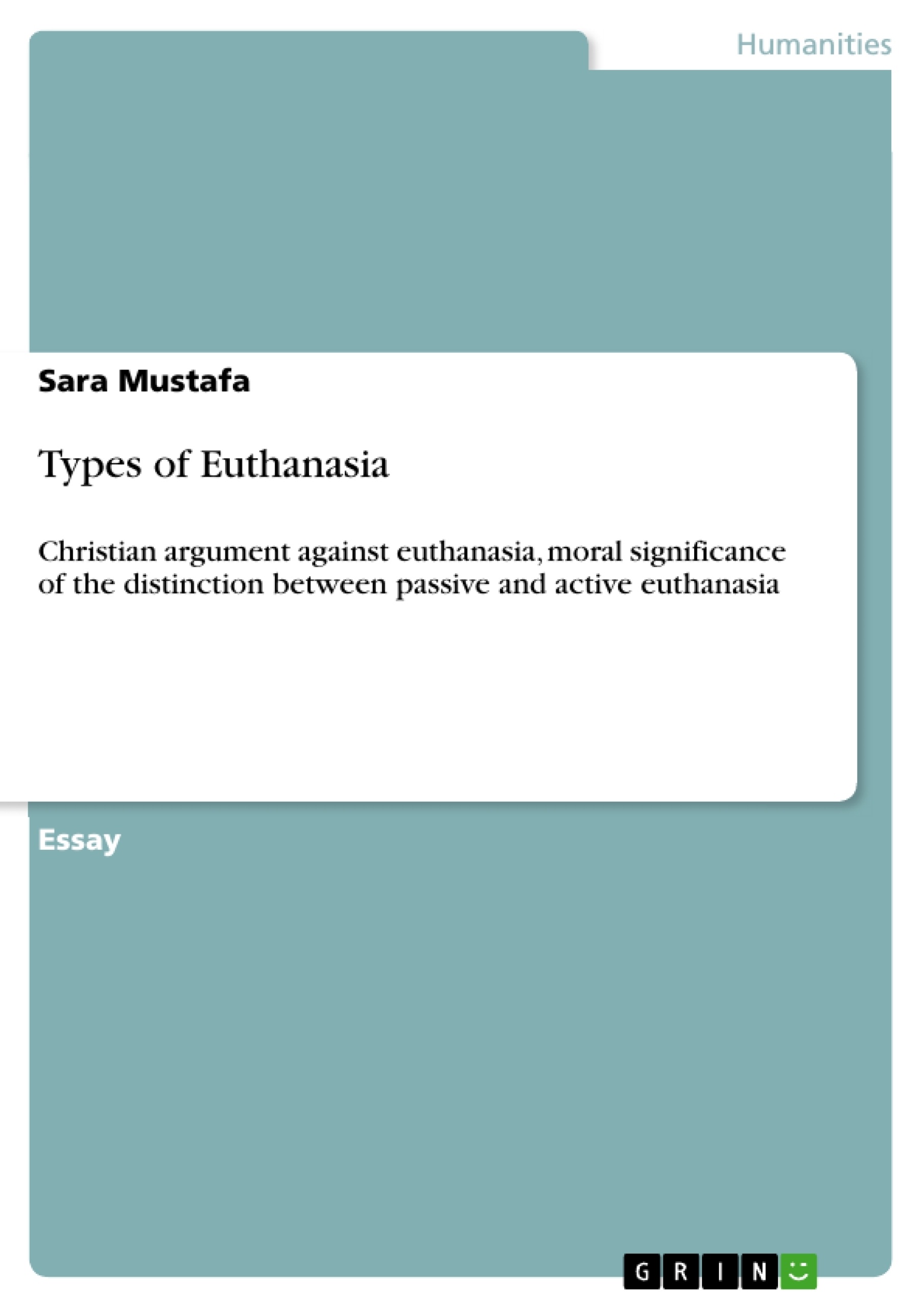The great medical knowledge of doctors, which has developed steadily since the 19th century, was the reason why death disappeared from the private are of the population and dying took largely place in hospitals. The death was tabooed in this way because doctors saw it as their jobs to save lives. Therefore, a patient’s death was considered as a failure and should remain hidden.
For the past few years, however, there has been an intention to dissolve this taboo again and to integrate dying or death into medical ethics (Huber 1999: 74). Consequently, the central question is whether an intended killing can be considered ethically justified.
In order to approach this problem, some basic information about the euthanasia concept and the different types of euthanasia will be explained in the following. Subsequently, I will state my point of view to the whole subject matter.
Table of Contents
- Introduction
- Types of euthanasia
- Active euthanasia
- Passive euthanasia
- The usual Christian argument against euthanasia
- The three basic kinds of euthanasia
- Voluntary euthanasia
- Non-voluntary euthanasia
- Involuntary euthanasia
- The moral significance of the distinction between passive and active euthanasia
- Conclusion
Objectives and Key Themes
This text examines the ethical and moral arguments surrounding euthanasia, specifically focusing on the distinctions between different types and the prevailing Christian perspective on the practice. The author aims to provide a comprehensive understanding of the concept and its implications.
- Defining and distinguishing types of euthanasia
- Analyzing the Christian stance against active euthanasia
- Exploring the moral implications of the distinction between active and passive euthanasia
- Examining the autonomy of the individual in relation to end-of-life decisions
- Evaluating the potential consequences of legalizing euthanasia
Chapter Summaries
- Introduction: This chapter introduces the topic of euthanasia and its historical context, emphasizing the changing perspectives on death and dying in medical ethics. It outlines the central question of ethical justification for intended killing and provides a framework for the subsequent discussion.
- Types of Euthanasia: This section defines and differentiates between active and passive euthanasia. Active euthanasia is characterized as the intentional and immediate ending of a life at the patient's request, while passive euthanasia involves the voluntary withdrawal of life-sustaining medical measures. Examples of both types are provided.
- The Usual Christian Argument Against Euthanasia: This chapter delves into the strong opposition to active euthanasia from both Christian churches. The argument relies on the interpretation of the fifth commandment against killing and emphasizes the sanctity of life and the belief that God alone has dominion over life and death. It also explores the concern that legalizing active euthanasia would undermine respect for life and increase the potential for unlawful killing.
- The Three Basic Kinds of Euthanasia: This chapter examines the different forms of euthanasia based on the patient's autonomy and consent. Voluntary euthanasia occurs when the patient explicitly requests to be killed, while non-voluntary euthanasia involves decisions made on behalf of an incapacitated patient. Involuntary euthanasia refers to the termination of a life without the consent of the individual. The chapter highlights the ethical considerations surrounding each type.
Keywords
Key concepts and topics explored in this text include active euthanasia, passive euthanasia, voluntary euthanasia, non-voluntary euthanasia, involuntary euthanasia, Christian ethics, sanctity of life, individual autonomy, end-of-life decisions, and the moral implications of legalizing euthanasia.
- Quote paper
- Sara Mustafa (Author), 2020, Types of Euthanasia, Munich, GRIN Verlag, https://www.grin.com/document/956196




